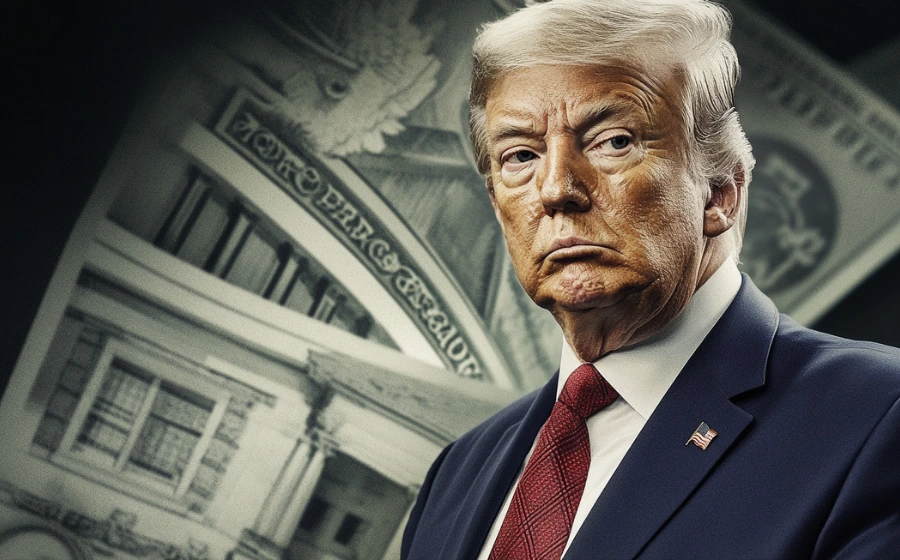
KEYTAKEAWAYS
-
Melania Trump’s name and social media post were used to promote the $MELANIA meme coin, which later collapsed by over 98%, sparking investor outrage and legal action.
-
On-chain analysis revealed that the project’s core team pre-mined tokens, coordinated dumps, and used celebrity endorsements as a trust-building mechanism to attract retail investors.
-
The lawsuit has intensified scrutiny on celebrity-backed crypto projects and may become a landmark case for future Web3 regulations on marketing, disclosure, and liability.

CONTENT

THE FIRST LADY’S MEME COIN SCANDAL
In early 2025, a meme coin called $MELANIA quietly launched on the Solana network. The name behind it was none other than former U.S. First Lady — Melania Trump. Shortly after the launch, she posted on social media: “First Lady Meme Coin now live,” accompanied by a patriotic graphic of herself with the U.S. flag and crypto symbols. Market sentiment exploded. The token surged to $13.73 within hours, reaching a market cap of $2.1 billion. Investors flooded in, and $MELANIA was soon mentioned alongside $TRUMP, another meme coin launched by Donald Trump, as the pinnacle of political Web3 hype.
But behind the buzz lay a ticking bomb. In the following weeks, $MELANIA’s price collapsed by over 98%. Retail investors who bought the top were left with massive losses. A federal lawsuit in New York revealed a planned scheme behind the project. Investors accused the promoters — crypto companies Meteora and Kelsier Labs — of orchestrating a pump-and-dump strategy using early token allocations, private wallets, and social media hype. Although Melania Trump was not named as a defendant, her image and endorsement had become the most effective marketing weapon of the campaign.
The complaint read: “The defendants exploited Melania Trump’s public status to create a false sense of trust. She was the face, and the face was the tool.” This was a test of social trust: when symbols of power are repackaged into investment tools, emotion and capital blend, and retail investors become fuel for something far more calculated.
CONTROL, HYPE AND CASHOUTS: THE ON-CHAIN PATTERN
A closer look at on-chain data tells a clear story. The project was run by Benjamin Chow of Meteora and Hayden Davis of Kelsier Labs. Before the public sale, wallets controlled by the team already held large allocations of $MELANIA. Within two days after launch, they sold around $30 million worth of tokens. A few weeks later, another $1.5 million was dumped. The timing matched the peak of the token’s price action, suggesting a coordinated exit.
These wallets formed a tight cluster with minimal outside activity. There were no transfers to or from wallets linked to Melania Trump. Her social media post served as a trigger point, pulling in retail buyers while the insiders exited silently. Analysis tools like BubbleMaps showed a classic case of price manipulation: concentrated token control, viral hype, and synchronized dumping.
Even more concerning, this wasn’t the team’s first time. The lawsuit listed other meme coins they launched — M3M3, LIBRA, ENRON, TRUST — all with similar patterns: no utility, viral names, sudden spikes, and eventual collapse. As one analyst put it: “This is not a meme coin. It’s an emotional extraction engine.”
Crypto is known for volatility. But when price action is entirely dictated by private wallets and social media campaigns, the dream of Web3 decentralization becomes a cruel irony.
CELEBRITY ENDORSEMENTS OR FRAUD IN DISGUISE?
The reason $MELANIA sparked such intense reaction wasn’t just because of the crash. It exposed the legal gray area around “celebrity meme coins.” The lawsuit clearly stated that Melania Trump may not have managed the project, but she failed to restrict the use of her identity, which led to public misunderstanding. From an investor’s point of view, her post was a de facto endorsement.
Melania’s legal team responded that she only licensed her name for NFTs and merchandise, and had no knowledge of token trading or financial operations. If she had known about any fraudulent activity, she would have withdrawn the agreement. But in the social media era, a simple post and promotional image are enough to create the illusion of credibility.
What made this more controversial was the timing: $MELANIA launched on January 19, one day before Donald Trump would have taken office again if re-elected. The $TRUMP token was also rolled out around the same time. Critics questioned whether this was a coordinated political-crypto play. In this setup, celebrity “permission” became the legal wrapper of a speculative asset.
Online reactions were split. Some argued, “She shouldn’t be blamed for what others did.” Others responded, “If this isn’t an endorsement, what is?” This reflects one of crypto’s toughest ethical puzzles — the blurry line between endorsement and deception, hidden in tweets, contracts, and volatile charts.
REGULATORY STORM LOOMING: THE TIPPING POINT OF CELEBRITY COINS
$MELANIA’s collapse is just one more domino in the unstable world of meme coins. In late 2024, members of the U.S. Congress sent inquiry letters to the SEC and CFTC, asking whether the Trumps’ political coins violated securities laws or ethical rules. Although no formal charges have been filed yet, many legal analysts believe this case could become a landmark in how regulators view celebrity-backed tokens.
Attorney Max Burwick commented that this lawsuit could set a precedent for “where legal responsibility begins for crypto promotion.” He argued that if teams can use celebrity names without consequences, then the idea of consumer protection breaks down. Crypto media outlets agreed. BlockBeats wrote that $MELANIA was a “textbook example of how centralized control can exploit decentralized tools.” The Guardian called it “a celebrity coin disaster.”
The crypto winter may be thawing, but regulatory heat is rising. Melania Trump likely saw this project as a brand extension or NFT partnership. But in a fast, unregulated Web3 market, it turned into a legal and reputational firestorm. While there’s no proof she gained illegal profits, her name, status, and trust were used as fuel for speculation.
Trust is always fragile in crypto. $MELANIA’s dramatic rise and fall is not just a meme coin story. It reveals the cracks between public perception and project reality. And it forces us to ask: In the borderless economy of Web3, who pays the price for celebrity trust?












